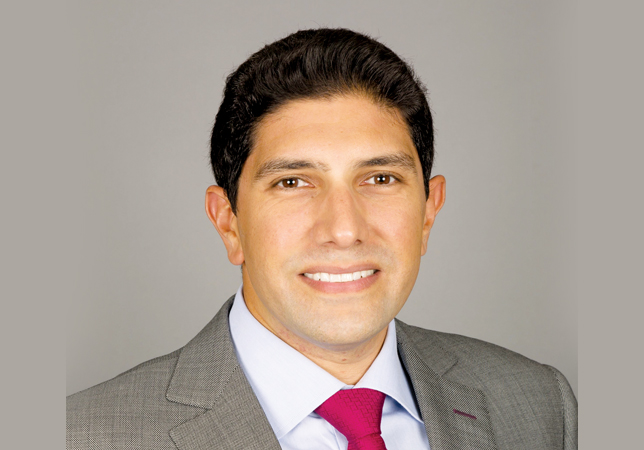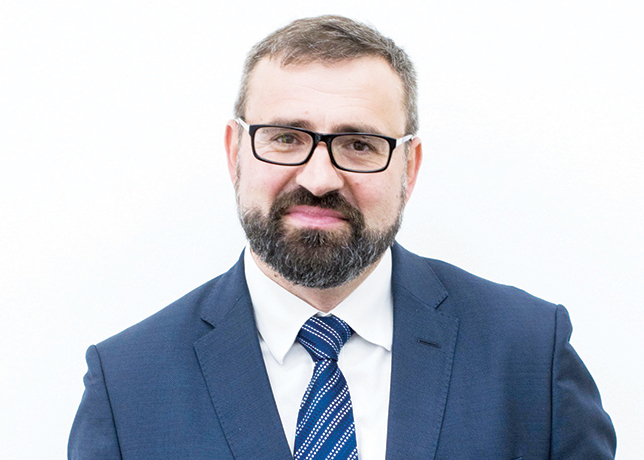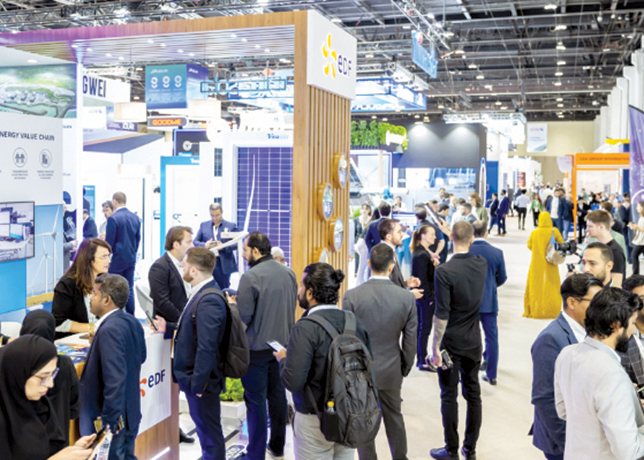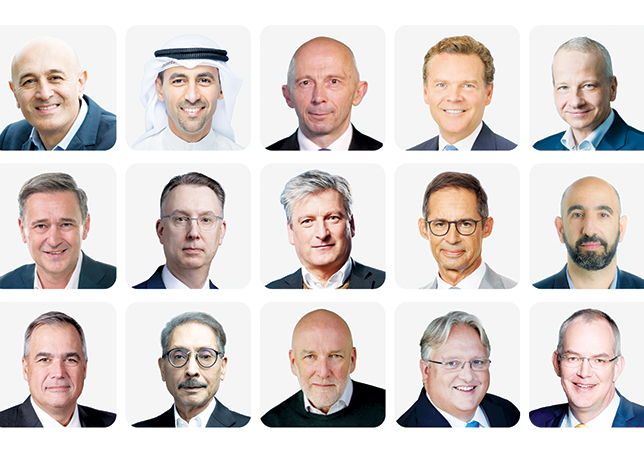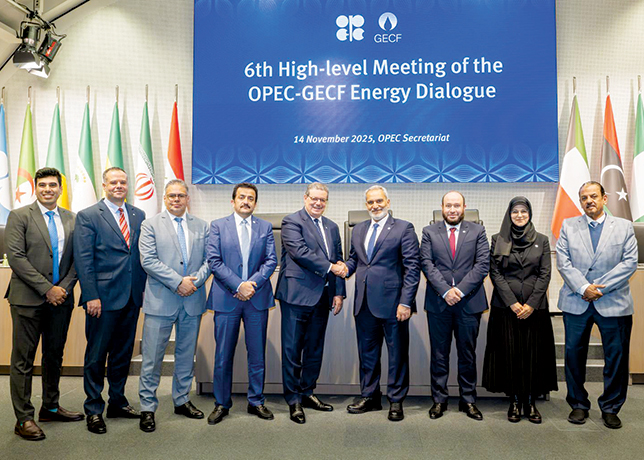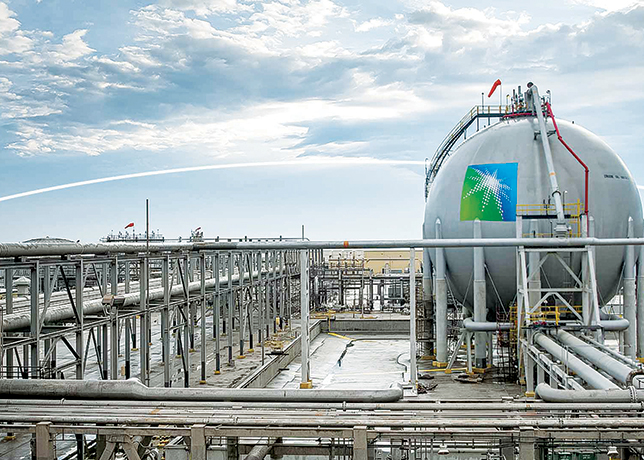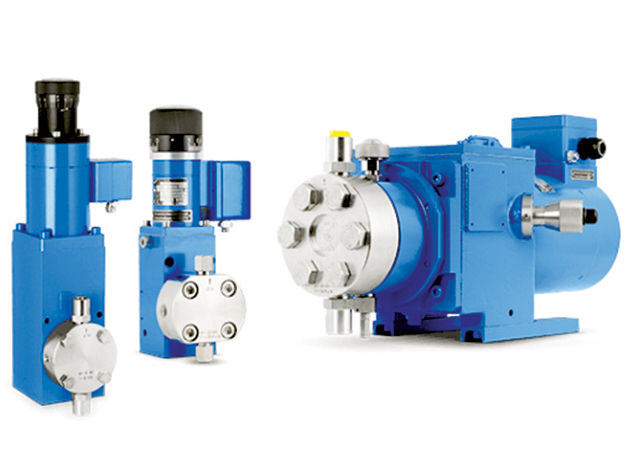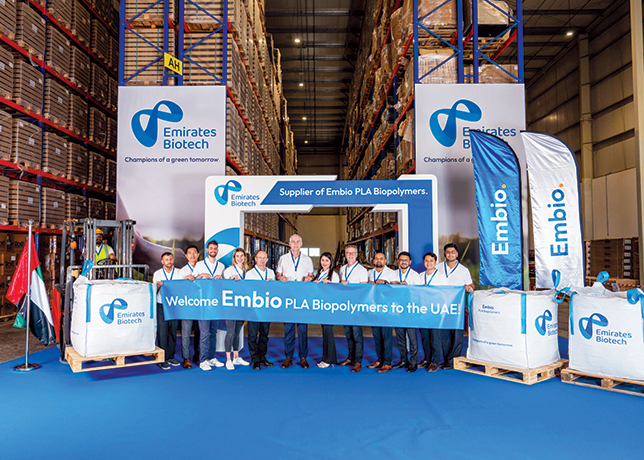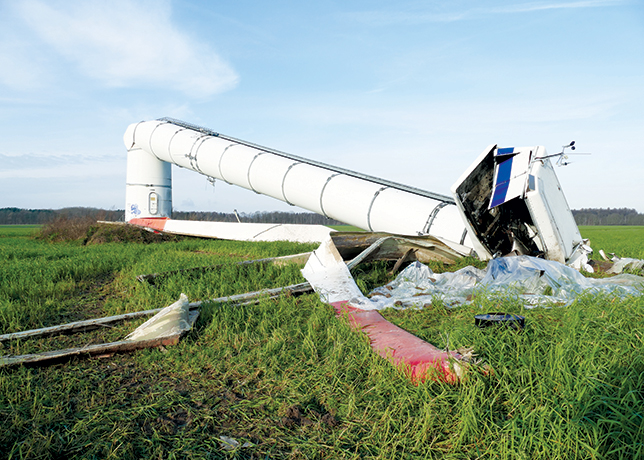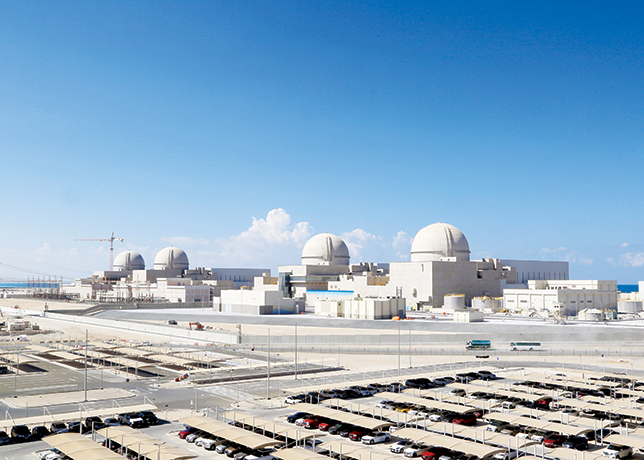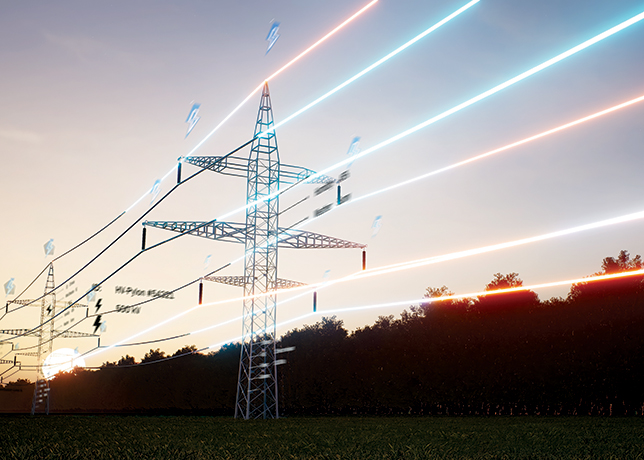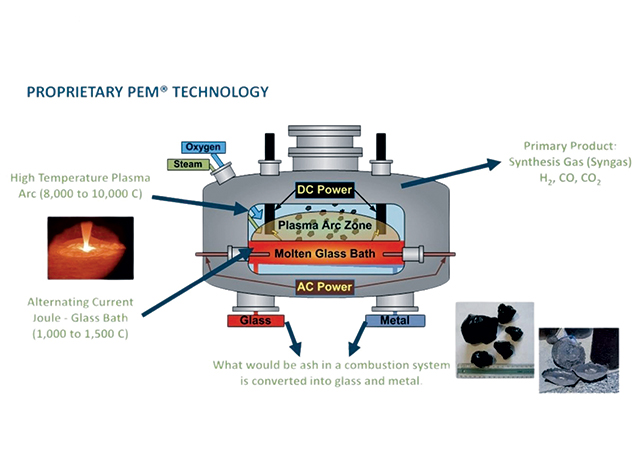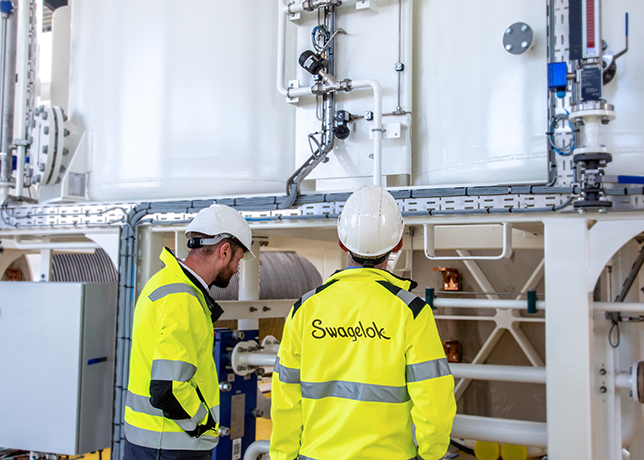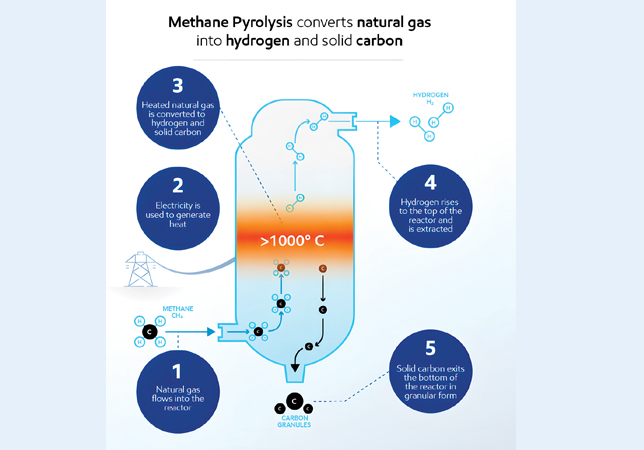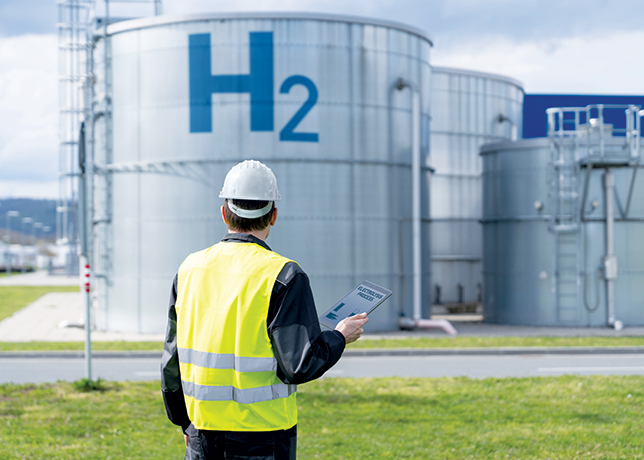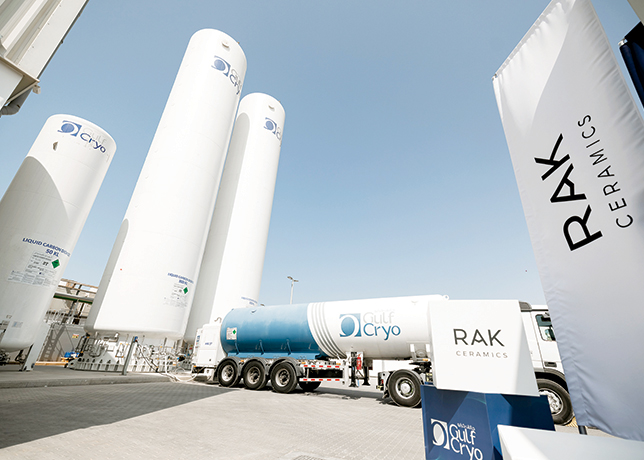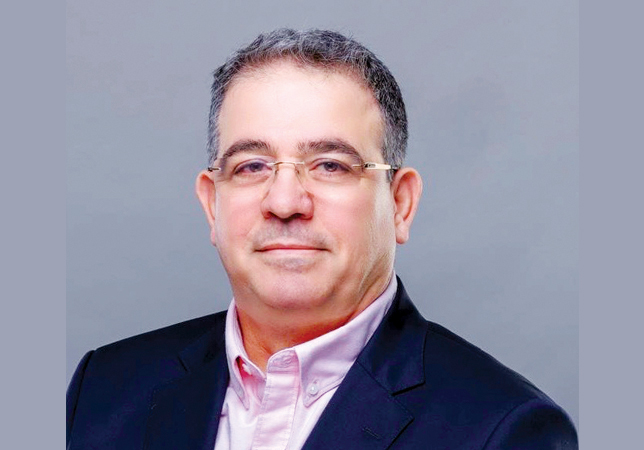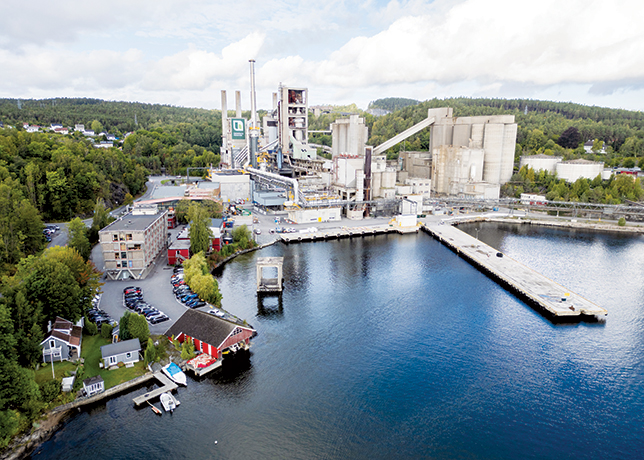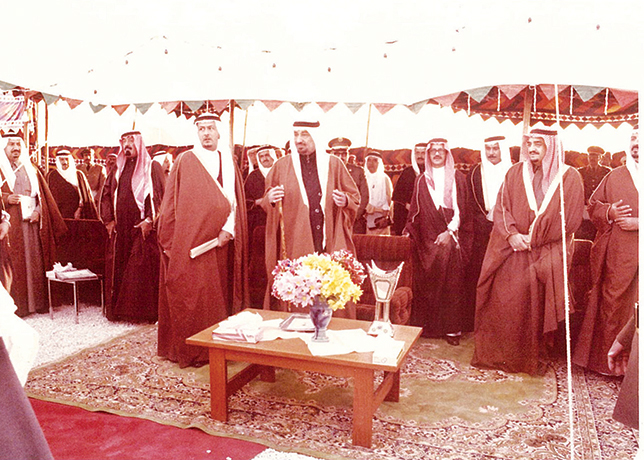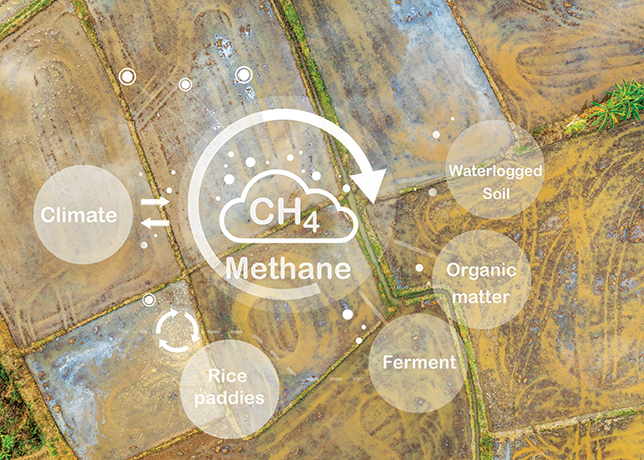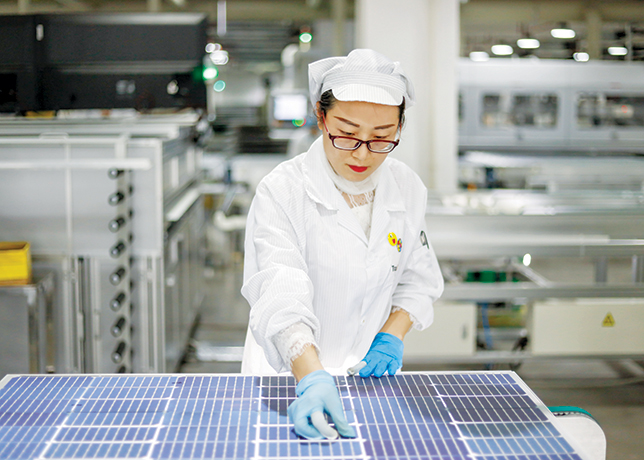
 Saudi Steel Pipe's Dammam Factory
Saudi Steel Pipe's Dammam Factory
Firm Claims Victory in ERW Battle
It is now well known in the Gulf that Dammam-based Saudi Steel Pipe had commissioned a state-of-the- art HFI (high frequency induction) welded steel pipe mill in October of 2000 and won the API monogram in January 2001.
A few months later came Saudi Aramco approval and then approvals from Hunt Oil, Dove Energy, ABV Rock, and TotalFinaElf.
SSP's success over the past several years came not by chance but by a virtue of a well thought out plan. It would first invest in the very best technologies available in the market around which it would design its plant, and then systematically educate the marketplace relative to its evolved version of resistance welded steel pipe.
In many quarters of the oil and gas industry, a bias exists against Electric Resistance Welded (ERW) pipe.
This bias is often reflected in an across-the-board rejection of ERW steel pipe for application in sizes less than 16' and it is not until pipe diameters go beyond the limits of seamless pipe processing capabilities that welded steel pipe (SAW/DSAW in spiral or long seam configurations) is acceptable.
The bias is also driven by recollections of early experiences with ERW inconsistencies, although these were eliminated by new steel manufacturing technologies coupled with advancement in pipe forming, welding and process control methodologies.
Regrettably, in some circles the reputation of ERW steel pipe is not driven by the best producers but by the least competent.
The demand for high quality pipe has grown dramatically over the past few years, with oil and gas prices strengthening.
In the light of the escalating prices of seamless pipe and simultaneous shrinkage in the capacity of this product, ERW steel pipe is getting a closer look today.
In addition to these re-evaluations of technology, the differences between traditional HFI welded steel pipe are justifiably being recognised.
A suspect reputation
The ERW process came into being in the mid-1920s utilising a low frequency ac current or dc feed to power welding process with an inherent tendency for fluctuations in power input yielding variations in weld quality.
Exacerbating this early deficiency in the ERW process was the fact that most steel in this period was ingot cast and, by its nature, concentrated non-metallic in the solidification process resulting in a condition called centerline segregation, which impacted the integrity of pipe manufactured from such raw material.
The combined effect of these two issues; that is, the cleanliness of steel stock and instability of early welding system, created the bias that exists even now.
Improved attitudes
Today's world of steel manufacturing is a different place.
Most higher quality integrated steel mills that produce qualified API coil stock utilise Electric Furnace technology in their melt shop and typically feed a high grade pelletised iron ore with a small percentage of segregated steel scrap as base charge.
Most mills employ specialised ladle treatments to further purify their steel products as well.
These advancements in the quality and cleanliness of steel products are the most significant element in the equation to the production of superior welded steel pipe.
Mill Design
Mill design over the past several decades has evolved to allow welded steel pipe to be manufactured in a way to allow it to find application into critical areas where once only seamless pipe would be accepted.
A first critical factor in this evolution was to provide a continuous feed to the mill.
Early mills fed the forming and welding process one coil at a time, resulting in continual start/stop of the line.
This condition never allowed the mill to reach equilibrium, with expansion and contraction of critical tools, as the mill heated up and cooled down with each coil processed.
The introduction of continuous coil joining, ie end welding start of one coil to the tail of each preceding coil, kept the process in perpetual operation.
The continuous production scheme is accomplished by introducing a strip stock accumulator into the line. This accumulator is designed to act in a process storage area, where 200 metric tonnes of strips can be held as feed to the forming and welding stations, while the feed end of the mill stopped to add each subsequent coil
The next critical operation in today's state-of-the-art mill is the milling, rather than shearing, of the edges of the hot rolled steel strip to ensure consistently clean, oxide free, parallel edges that will eventually meet at the squeeze rolls for forging the best possible defect free weld.
This was traditionally carried out by trimming the edge of the strip to arrive at the desired width necessary to provide an in-spec tube after welding. Unfortunately, this process was far from perfect, even when the cutting tools were at their sharpest.
This process eliminates many potential problems by ensuring a polished finish with parallel surfaces free of any contamination.
As these polished edges meet the welding station, the best condition for uniform heating and surface-to-surface contact occurs in the squeeze stand.
Assuming all other conditions in the welder are correct with respect to temperature, line speed, and applied current, the machined strip edge surfaces will assure the cleanest bond line possible.
After machining the edges of the strip, the next operation is to enter the breakdown mill where an initial shaping of the strip occurs.
Next there is a sequence of rolls that take the product to near its final shape before entering a three-roll fin pass section just before entering the welding unit.
Early methods of shaping the strip took it through a half dozen stands where each pass introduced a sharper contouring of the strip.
This harsh cold forming of the strip resulted in variations of residual stress building up on the strip edges and, consequently, variations in the amount of spring back encounter as the pre-welded tube entered the welding station.
This introduced another potential for variation in the temperatures attained in heating prior to squeeze and, subsequently, in the uniformity of upset angle in the weld zone.
A more recent variation in mill design came with the introduction of linear or cage forming.
There is still an initial two stage break down station, where the initial shaping takes place and often there is a station for introducing a slight break or bend in the strip edges to move the machined edges away from subsequent forming to avoid damage. This is where the similarity ends.
Linear forming or cage roll forming utilises a series of up to 30 sets of rolls with each set at progressively tighter angles which virtually eliminates these stress concentrations on the strip edges.
A Generic Term
The generic term of ERW steel pipe is still applied to both contact tip ERW pipe and HFI welded steel pipe as both utilise high frequency (above 140 kHz ) in their process.
Contact tip ERW is the older approach which directly introduces power to the strip, which, in turn, heats the strip edges.
This contact tips were typically copper electrodes that literally rode the surface of the strip on either side of the gap. Current was introduced through these electrodes directed into the nearly formed tube on both sides of the strip.
The facing edges of the strip heat approximately 1,450 C where they are then forged together in the squeeze roll stand.
This is the primary method that was used to manufacture ERW pipe from the mid-1920s until well into the 1970s and is still employed at many operating mills today.
However, many argue against this system because the tips wear erratically, get out of alignment and skip on the surface of the tube causing variations in the temperatures and burning the surface of the pipe when they arc.
The better alternative to contact tip welding is the use of HFI welding.
Here, the welding apparatus never touches the pipe and, instead, current is induced by passing the formed strip through the coil with strip edges being heated to the proper forging temperature with no
Continued from page 79
variation in current, power input, or equipment contamination.
Resistance welding is not a melting process but a forging operation. Strip edges are taken to a proper forging temperature and the squeeze rolls apply the proper pressure to forge a proper bond.
Relative to this welding station, the appropriate setting of all the critical welding parameters, as confirmed by actual metallographic examination of weld zone itself, is the single most critical operating in the system.
Monitoring, recording and control of all critical welding variables has found its way into those few state of the art HFI welded steel pipe manufacturers operation today.
A final, very important operation, critical to the products used in oil and gas applications is the employment of reliable seam annealing or normalising.
The acceptable criteria for proper seam annealing is that employed electrodes are able to induce sufficient current to drive through wall temperature to 950 deg C.
Additionally, the system should be equipped with a laser guided seam tracking device that will always position the electrodes squarely over the weld.
Guaranteeing successes
In the selection of a mill to produce welded steel pipe for critical applications, the described equipment and manufacturing methods should be requisite.
Another matter of concern to today's sophisticated line pipe manufacturer is traceability of product as it moves from the coil suppliers' stock through each operation.
Over the past few years, it has become increasingly important that manufacturers are held liable for not only immediate performance of their product, but also for long-term service.
For a pipe manufacturer, this consideration mandates the development of an elaborate system to capture incoming coil details and the log critical process information from each process station to build a full history for each length of pipe produced.
Any manufacturer which cannot tell the full detail of each pipe section in his stock has potential for creating a field problem for the customer.
Well-trained QA staff must also have access to a well-equipped metallurgical laboratory to support product development and manufactured product evaluation and analysis.
A properly outfitted metallurgical laboratory with up to date testing equipment is not an option.
Process control
A good test of a manufacturer rests in its integration of the best available computer aided technologies for controlling the critical process plant.
Reliance on the operators alone to remain vigilant for slightest variances in the process is no longer acceptable today and systems that monitor, record and control critical processes on a continuous basis are being demanded.
One such system for the monitoring and control of all critical welding variables is continuous electronic process control (CEPC).
In this system, a pipe manufacturer monitors all critical variables in the welding system such as temperature, line speed, current, power and an efficiency factor (power/line speed x thickness).
The mill will determine the appropriate setting for each of these variables and then evaluate selected samples of pipe to confirm the integrity of the weld at said setting.
Aside from the sample performance in the traditional flattening test and other mechanical and physical tests, a photomicrograph of the weld area is etched to reveal the metal flow angle.
A proper range of metal flow angle that suggests a solidly forged weld is well established in the industry.
Any measured metallographic sample where the angle falls below 40 degrees is suspect either due to too low a forging temperature or not enough pressure in the squeeze stand.
Too steep an angle suggests that the pressure was too great and/or temperature too high, resulting in too much of the molten interface being purged, leaving low temperature interface. Both conditions could result in a cold weld condition.
A consistent upset angle supported by good seam normalising and strong mechanical test results are sought to confirm the quality of the weld.
Having established a metal flow angle range and good test data supporting the quality of each, the parameters for establishing a reliable range for the welder variable is within reach.
Consequently, from the collected test data, the defaults can be set and alarmed in such a way that whenever any one of the variables strays from the preset limits, an alarm will sound and the pipe will be marked.
The oil and gas industry's concern for product reliability and, ultimately, safety is not a matter anyone takes lightly.
For ERW / HFI welded steel pipe manufacturers wanting to serve this vast global market, a dedication to meaning and/or exceeding the requirements set out in evolving industry and individual company specifications for line pipe is essential.
All of the processes, systems and procedures described are in place within but a handful of ERW/HFI manufacturing plants worldwide with SSP being the most recent member of this fraternity.
Those that adhere to these principles are producing a cost-effective alternative to seamless pipe that is suitable for many applications that were the exclusive domain of seamless pipe in the past.
A handful of multinational oil companies recognise that among the approximate 60 API monogrammed ERW/HFI welded steel pipe producers worldwide, the level of sophistication varies widely, as does the quality of end product. Consequently, they employ a practice of carrying out a technical audit of all processes and procedures on mills believed to have the potential for meeting their specifications.
By doing so, companies do not condemn any given technology in a blanket way but have expanded their options for selection of API 5L line pipe with a positive impact on operating costs.
For more details please John Breton, business development manager, at johnbreton@yahoo.com.






